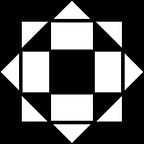Driven to Abstraction
Discussing and defining abstract art, from the Stone Age to the Modern Era…
Abstract is a word often misused when talking about art. Some critics doubt that truly abstract art can ever be produced through human agency and is therefore impossible! Basically, abstract art needs to be purely formal without any figurative reference. More precisely, abstract work should contain nothing that remains representational.
Russian painter Wassily Kandinsky was, arguably, the first to successfully achieve abstraction as an art form. Though he was not the first to use abstraction in art. So, before we consider his innovative improvisations and compositions, let’s take a look at some precursors and, briefly, discuss what makes them abstract… or not.
Perhaps the earliest painting we have yet discovered was, indeed, the first piece of abstract art? Among the famous animal paintings found in the caves of Chauvet and Lascaux France, there are numerous squares, grids, and rows of dots. In many ways they resemble the abstract art of the mid-Twentieth Century, a Miro maybe…
In the older Cantabrian cave complex of El Castillo, among simple outlines of macro-fauna and numerous hand-prints, are patterns of dots and discs. One single dot of red ochre has been dated as 40,800 years old. That’s much earlier…
